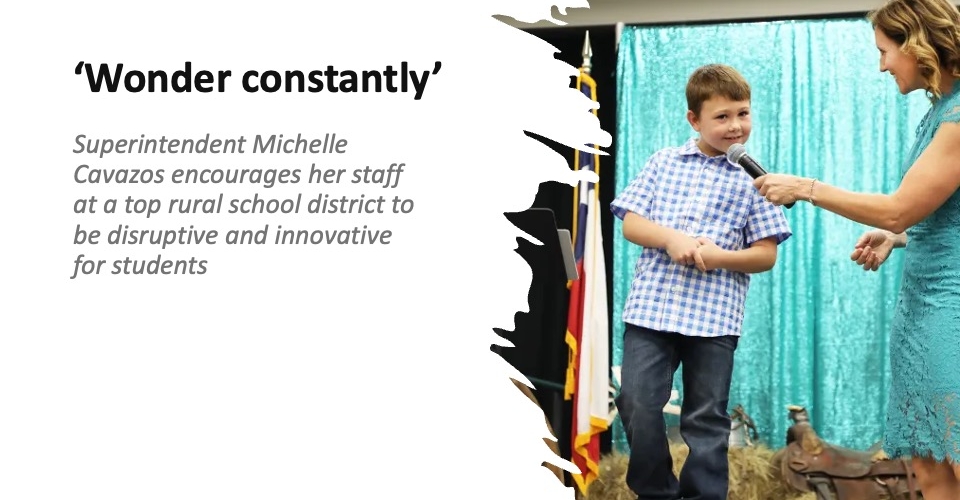When educators shift their focus from punishing disengagement to creating pathways for re-engagement, everyone wins.
A typical learning environment in K12 education consists of 25+ students and one educator. This educator is usually equipped with a one-size-fits-all methodology of teaching built around live lectures and fixed pacing—and students are expected to operate and behave in a highly rigid atmosphere, fully engaged for hours at a time.
If a student disengages for any reason, educators are taught to quickly correct that behavior. Repeated disengagement often results in disciplinary action or even with the student being pulled out of the learning environment altogether.
For comparison, consider an adult workspace. It’s normal, and even expected, that our colleagues (and we) will continually disengage and re-engage throughout the day. There are distractions all around us—reasons why we disconnect and reconnect. Our personal lives are naturally interwoven into our professional and academic lives, and it’s normal for a multitude of distractions to pull us away from focusing during long meetings or even as we perform short individual tasks.
However, when kids walk into a classroom there’s a much higher expectation for them to remain engaged. It’s not realistic in an adult world, yet we hold students to a different standard. Disengagements are usually quickly intercepted while the student is still distressed, emotionally dysregulated, or simply needs a break. Unfortunately, this is when most behavior problems escalate out of control. When a teacher publicly reprimands the student, the student can become frustrated, angry, and embarrassed. This can turn into a vicious cycle resulting in disciplinary action and ultimately the student developing indifference or resentment toward their education.
We must switch our focus from how to avoid disengagement to how to encourage re-engagement in a healthy and supportive way. This is especially important if those disengaged students are experiencing emotional dysregulation, have learning differences, are affected by trauma, or are impacted by other extenuating circumstances. Our overarching goal should be to find effective pathways to guide students as they re-engage in content.
Students have a role in re-engagement
Here are three strategies to effectively guide students to re-engage in the classroom:
1. Develop and adopt an adaptable, student-centered and self-paced teaching and learning model. Start by reimagining the learning environment so that students are given greater control over their learning pace. This allows classroom teachers to act more as facilitators, supporting students in small-group and one-on-one discussions. Replacing live lectures with short videos and other resources shifts the control from the teachers to the students.
More from DA: 6 keys to successful school communication and engagement in the digital age
Teachers then become empowered to respond to students’ individual needs while learning remains continuous through disruptions. A student-centered environment also empowers students to work at their own pace, allowing them to pick up where they left off. This gives students greater control over their learning and helps promote greater understanding and retention of the curriculum material—ultimately helping them succeed academically.
2. Focus on one-on-one engagement and small-group interaction. In a student-centered classroom, educators have the flexibility to invest time in one-on-one and small-group discussions with students. Working one-on-one with students allows classroom instructors to truly understand the drivers behind any emotional dysregulation and behavior issues, and then address these in a one-off setting.
Understanding the cause of frequent disengagement or identifying a pattern—is something going on at home or is the student just having a bad day? does the student have learning differences that are not being supported? is the student having difficulty understanding or being overwhelmed by the content?—will help teachers understand how to approach re-engagement as it occurs.
3. Co-create re-engagement strategies tailored to each student. Speak with students and their parents to develop realistic goals and expectations around their disengagement and re-engagement. No one is more aware of the drivers behind distractions than the students themselves, and empowering them to develop re-engagement strategies creates ownership, encouraging them to hold themselves and their peers accountable. To strengthen executive functioning skills, have students set daily to-do lists and complete brief reflections on their time management at the end of class.
Above all, make sure your expectations for engagement are realistic and approached in a thoughtful, sensitive way. Our focus as leaders and educators should be to build individualized avenues of support—ways to best engage and connect with our students, ensuring they feel safe and supported in the classroom.









